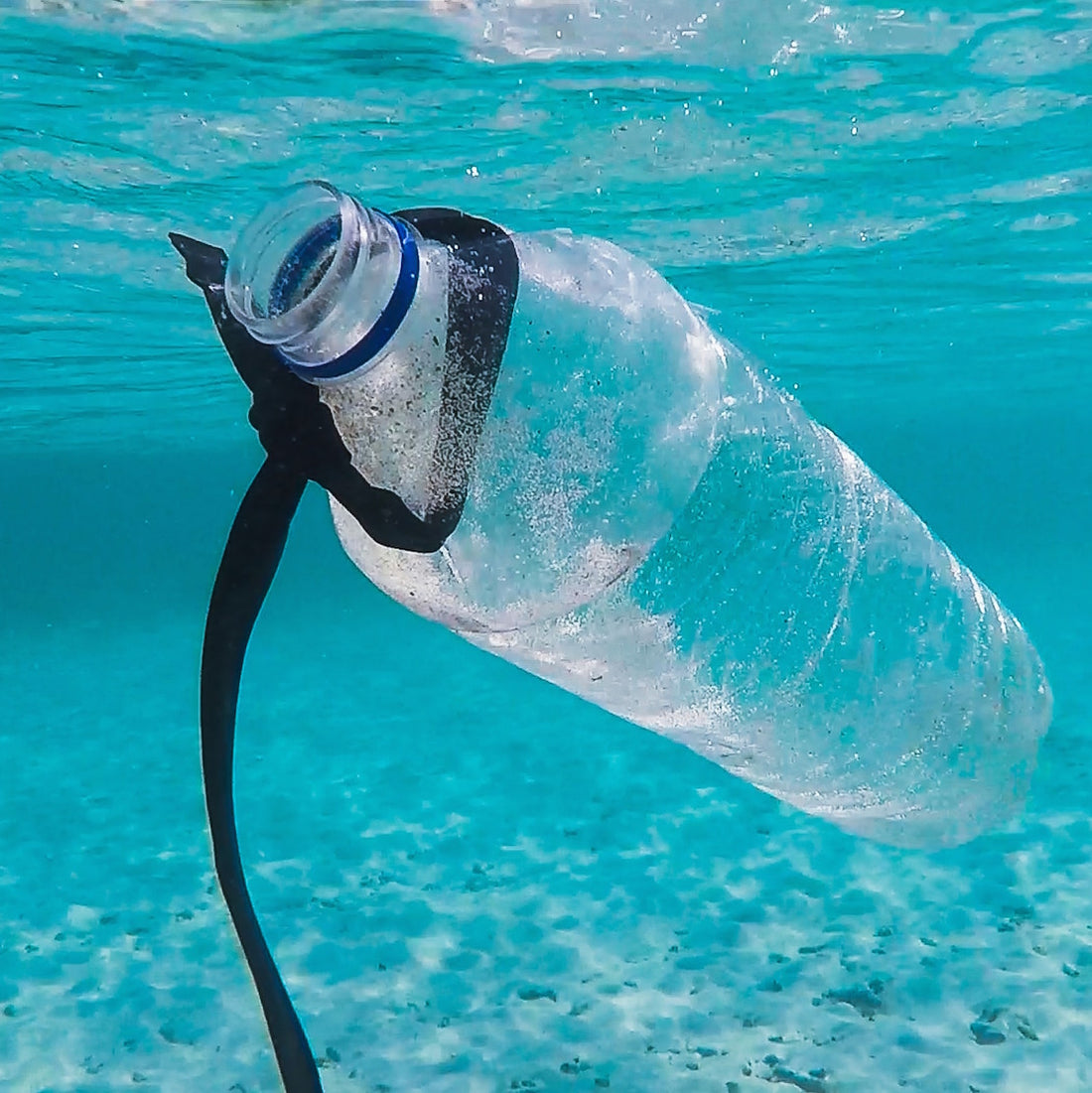
Buying and using plastic items for everyday use is something everyone on this planet today has grown up with. The volumes and needs have drastically increased, sure, but overall, plastic has been a constant staple in households for a few decades now, if not longer.
The war on plastic has gained momentum in this decade and has made a lot of us (who believe in climate change and care enough to do something about it) feel a little guilty of our past consumer habits and a little on edge about decision-making when it comes to shopping for our daily needs.
‘Climate grief’ is real and it’s upon us. BBC did an advisory article last year urging their readers to find ways to deal with their climate-change related worries and it is a helpful read. There have been many studies and polls clearly showing the very real and all-encompassing anxiety stemming from the irreparable damage we have brought to our planet.
When talking about doing our part in lowering our own personal impact to help curb the negative effects humanity is having on global warming, the first few things that come up are:
- Reduce ocean pollution
- Reduce food waste
- Reduce plastic
…and they are not in any particular order, but instead collectively responsible for the state of our planet [our home]. What these discussions often leave out are the pro-active action steps and how-to guides. What to do to reduce plastic, how to help our oceans stay clean, what measures to take to control and reduce food waste? What can an individual do?
Today let's talk about reducing plastic. There are, thankfully, many big and small ways to help control our use of plastic, and not all of them are about recycling and upcycling (although if that works for you, excellent, and keep at it!)
In countries other than the US, Australia and Ireland, recycling is still a difficult and badly managed venture. In Europe, the more developed nations fund big recycling projects (Germany, France and Austria are frontrunners) however the smaller and less economically stable countries still have a long way to go in this aspect.
The developing parts of the world still have zero impact on recycling, and can only contribute in innovative but controlled ways of reusing or reducing plastic waste accumulation. Do have a look at the exhaustive statistics on the Our World in Data site to understand how different parts of the world contribute to plastic waste.
With such big numbers and quite frankly, unimaginable quantities of plastic waste recorded every day, it is easy to lose hope and feel like your one little effort will amount to nothing when the rest of the world is doomed to use plastic all day every day. However, this is not entirely accurate. Green living trends are on the uprise and people all across the globe are actively embracing these trends, trying to reduce their own plastic consumption in an effort to reduce their environmental footprint.
Adapting to a ‘zero-waste’ and ‘minimalist’ lifestyle has gained popularity and a number of very appealing YouTube channels exist to help you along on your journey.
Here are seven ways to help you refuse and reduce your own consumption of plastic:
1. Kitchen utensils and food storage containers: Go around your house/apartment/dorm-room and take account of all the plastic found in your kitchen cupboards. Over time [as the items need replacing] replace plastic items with their eco-friendly alternative steel, glass or ceramic and there are some great eco wax wraps that can be used to cover food. Re-using glass jars for food storage containers is a great way to up-cycle and reduce waste. Vote with your consumer dollars by choosing to no longer buy plastic, which in turn will reduce the demand and therefore the manufacturing of plastic items.
2. BYOB (Bring Your Own Bottles) [and jars, lunch boxes, coffee cups, straws – the list can go on]: Using reusable and refillable straws, water bottles, coffee mugs, lunch boxes etc is such a great and efficient way to save hundreds and thousands of single-use plastics.
3. Avoid disposables whenever possible: Takeout, office lunches, outdoor events, take-away coffee – all these have one thing in common - single-use. Use-and-throw items are one of the worst polluting culprits because they go unnoticed and we all think the same thing about it (i.e. ‘it’s just a few sporks and plates, how bad could that be?). Instead:
- Look for eco-conscious companies around you and find bio-degradable alternatives. In Bangalore, India, there are entrepreneurs making disposable containers out of fallen leaves, so don’t think there aren’t enough options.
- Invest in long-lasting alternatives such as glass, bamboo, steel and ceramic containers.
- Tell the restaurant/eatery to not send you utensils. These days, food ordering apps have the option to request no cutlery - so use them. Every single pair not used is a pair not disposed of.
- Bring your own utensils, containers and re-usable coffee cups on planes, trains, and to take-out restaurants .
- Say no to drinking straws or bring your own bamboo or metal reusable straw.
4. Switch to bio-degradable or durable toiletries: The next time you are buying a toothbrush, shampoo, shaving cream, or a cosmetic product, do a quick search and look for organic, bio-degradable and plastic free options. Make sure your exfoliants are made from natural fibres as opposed to micro-plastic beads (unfortunately most exfoliants are still made with plastic - read how to choose eco toiletries and beauty products here). These eco alternatives may or may not be costlier, but they will last you just as long (if not longer) and give you A LOT of peace of mind every time you use them. Psst…remember to also check for the cruelty-free stamp! Here is a great guide on choosing cruelty-free products.
5. Make conscious changes when shopping: Everyday items like food, toiletries, fruit, vegetables and candies all come in plastics. Then once they go through the check-out they are put in bigger plastic bags to make it easy to carry them out of the store . First, try to find fresh produce outlets, bakeries, organic shops and eco-conscious brands that package better or not at all. Switch if you can. Then, make bagging kits for supermarket trips, farmers’ market days and such – these should contain paper bags for fresh produce, cloth bags for other items, and small containers for non-packaged edible items. Keep the kit replenished and clean and save yourself the guilt-ridden unpackaging in your kitchen.
6. Change how you pack food: Apart from tinfoil, most other packaging happens in saran wrap/glad wrap or other types of plastic-containing options such as plastic zip-lock sandwich bags. Think of switching to reusable wax paper and reusable lunch bags to reduce your plastic use.
7. Lastly, repurpose the existing plastic: Up-cycling is on trend at the moment, and it is a great way to bring a stylish personal charm to your own home. Olive oil tins, spaghetti sauce cans, soda bottles to small jars of cream, almost everything can be turned into a planter. Hundreds of green-thumbed bloggers can show you how to clean out and plant anything from succulents to sprawling money plants into your empty plastics. Remove their labels and use as is or paint them a uniform fun colour; grow plants using soil or hydroponically. Keep on your windowsill or give away as gifts and keepsakes; the options are endless. The joy – immeasurable.
The thing to keep in mind is that every little change makes a lasting difference. If something is too expensive for now, don’t focus on that, instead look for an area where you can make a change. If you don’t have good local green options, ask friends or family to send some or wait it out. Our world is getting smaller and start-ups are bringing brilliant eco-friendly ideas closer to us every day. The trick is to not feel overwhelmed, try to make small changes and thank yourself for making the effort, whenever you do.
 Article Written by Guest Writer Karishma Gaur who likes cats, books and soda pop, but one of these things is not like the other two. She teaches English and writes to earn and then spends it all lavishly sponsoring rescue kittens, shelters and her own coterie of feline munchkins. Her current favourite thing to do is to live green, clean and very lean. (Well, not as lean as she’d like but she picks her battles). You can find her arbitrary collection of thoughts and cat selfies over at gnarlienerd (Instagram) | gnarlynerd.wordpress.com (blog) | @karrietweets (twitter) Read more of Karishma's articles at The OM Collective here >>>
Article Written by Guest Writer Karishma Gaur who likes cats, books and soda pop, but one of these things is not like the other two. She teaches English and writes to earn and then spends it all lavishly sponsoring rescue kittens, shelters and her own coterie of feline munchkins. Her current favourite thing to do is to live green, clean and very lean. (Well, not as lean as she’d like but she picks her battles). You can find her arbitrary collection of thoughts and cat selfies over at gnarlienerd (Instagram) | gnarlynerd.wordpress.com (blog) | @karrietweets (twitter) Read more of Karishma's articles at The OM Collective here >>>

